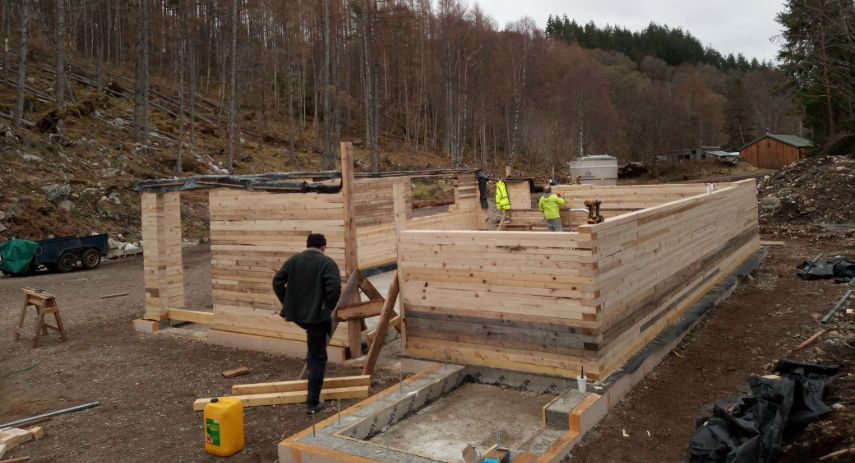
Glengarry Community Development Trust and Glengarry Forest Cabins
community ownership, cooperative ownership, lease/license (crofting tenancies)
The community at Glengarry bought their first woodland from the Forestry Commission in 2015, with a view to manage the land for the benefit of the community and the wider public. A number of projects are now being taken forward by the Trust, bringing together diverse governance approaches – e.g., community shares, and crofts and croft housing.
An unexpected opportunity for the community to acquire a public forest
In 2015, the Forestry Commission notified the community of Glengarry about its intention to sell a forest, 30.5 hectares in size, on the edge of the village. This led to the community forming a steering group of local residents. Despite initial reservations as the community had never considered owning a forest, they could see the potential for the land which was of high quality. A community body was formed, and the community buy-out was completed under the National Forest Land Scheme. Since then, the Glengarry Community Development Trust (formerly: Glengarry Community Woodlands) has acquired more land and greatly diversified its activities, which include setting up a new community benefit society for renting out cabins.
Diverse and collaborative governance across the Trust and its projects
The Glengarry Community Development Trust is a company with charitable status. It has more than 60 members from the Glengarry Community Council area, but the Trust accepts associate members from other areas. The trustees provide strategic direction to the activities of the Trust, within the boundaries set by the charitable objectives. These objectives are:
- To manage the land for the benefit of the community and the public.
- To provide recreational activities.
- To advance community development, including urban or rural regeneration.
- To advance education of the community about its environment, culture, heritage and history.
- To advance environmental protection.
The Trust employs 4.5 FTEs. Initially, staff members were funded through grants (e.g., from Highlands and Islands Enterprise) and community funds from local windfarm projects. Whilst these are still important sources of funding, to ensure the long-term viability of the Trust, an eco-tourist project is being taken forward, providing off-grid tourist accommodation in bespoke cabins built using timber from the community wood. A community-owned social enterprise, Glengarry Community Benefit Society, which owns the forest cabins on the Trust’s land. The project is partially funded (to the value of £279,000) by 110 investors from the community, and 69 external investors, through community shares, at a nominal value of £25 per share. How much interest is paid on shares is determined by the board from time to time. The Trust also has a share in the Glengarry Forest Cabins (the “Community Anchor Share”) which gives the Trust reserved seats on the board and a veto right on decisions that would fundamentally alter the nature of the society. This structure ensures coherent decision-making between the Glengarry Community Development Trust and Glengarry Forest Cabins.
Additionally, the Glengarry Community Development Trust is developing a project on 47 hectares of land at Ardochy Forest, which was transferred into community ownership in 2022. This project is a partnership between the Trust, the Communities Housing Trust (who also own land in the forest) and the Woodland Crofts Partnership. The second phase of the project will see the establishment of two owner-occupied crofts and two tenanted crofts on land owned by the Trust. This is in addition to development of four affordable homes and two woodland crofts on adjacent land owned by the Communities Housing Trust (phase 1). The collaboration is based on clear, mutual understandings of what is needed and how to work with the community. However, where big decisions need to be made, the landowner has the final say.
Social cohesion, community capacity and community confidence
The community woodland and its spin-off projects are significant for local employment. This goes beyond the Trust’s staff and includes local contractors and other people delivering work on a self-employed basis. Where the local community is diverse and attracts many people from outside the area, the community woodland has supported social cohesion through seasonal activities. Lots of work is being undertaken with the local school including a forest-school holiday club. Community ownership has led to improved woodland management, as non-native conifers are removed (and used as building material and firewood) and the ancient woodland is restored. Finally, the successful realisation of community ownership and project development provides learning experience for those involved, building community capacity and confidence.
Sources
- Interview Tom Cooper, Development Manager at Glengarry Community Development Trust
- https://www.glengarry.org.uk/